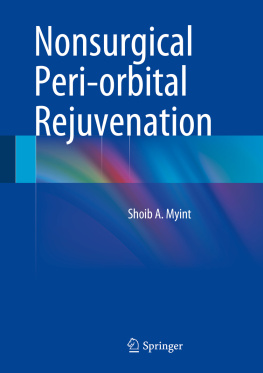La Casa de Mis Sueos
All photos are by the author
First published in 1999 by Westview Press
Published in 2021 by Routledge
605 Third Avenue, New York, NY 10017
2 Park Square, Milton Park, Abingdon, Oxon OX14 4RN
Routledge is an imprint of the Taylor & Francis Group, an informa business
Copyright 1999 by Taylor & Francis
All rights reserved. No part of this book may be reprinted or reproduced or utilised in any form or by any electronic, mechanical, or other means, now known or hereafter invented, including photocopying and recording, or in any information storage or retrieval system, without permission in writing from the publishers.
Notice:
Product or corporate names may be trademarks or registered trademarks, and are used only for identification and explanation without intent to infringe.
Library of Congress Cataloging-in-Publication Data
Fletcher, Peri.
La casa de mis sueos : dreams of a home in a transnational
Mexican community/ Peri Fletcher.
p. cm.
Includes bibliographical references and index.
ISBN 0-8133-2499-8 (hc)
1. Napzaro (Mexico)Emigration and immigrationSocial aspects.
2. HousingMexicoNapzaro. 3. Alien labor, MexicanUnited
States. I. Title.
JV7409.Z6N364 1999
304.8730723dc21
99-15568CIP
ISBN 13: 978-0-3670-1005-8 (hbk)
ISBN 13: 978-0-3671-5992-4 (pbk)
DOI: 10.4324/9780429039911
For Ed, Sebastian, and Julian
Contents
2 The Making of a Transnational Community
A Changing Moral and Physical Landscape
Community Studies in Latin America
Napzaro: From Hacienda to Ejido
State Policies and the Creation of a Binational Interdependence
The Ejido Today
The Transnational Community
Conclusion
3 La Casa de Sueos (House of Dreams)
Migration and Houses
House Design, Economic Space, and Consumption
House Design, Social Space, and Social Relations
Conclusion
4 Land, Livestock, and Remittances: Changing the Balance
Todos Somos Familia
Migration and the Decline of Egalitarianism
The Politics of Change
Conclusion
5 The Transnational Household Economy
The Household as an Enduring Social Science Construct
The Household in Agrarian Communities
Households in a Transnational Context
Conclusion
6 Las Casas Solas (The Lonely Houses)
Family Strategies and Individual Desires
Transnational Development Cycles
Loyalty, Recruitment, and Rebellion
Conclusion
7 Conclusion
Local Culture
- 2 The Making of a Transnational Community
- A Changing Moral and Physical Landscape
- Community Studies in Latin America
- Napzaro: From Hacienda to Ejido
- State Policies and the Creation of a Binational Interdependence
- The Ejido Today
- The Transnational Community
- Conclusion
- 3 La Casa de Sueos (House of Dreams)
- Migration and Houses
- House Design, Economic Space, and Consumption
- House Design, Social Space, and Social Relations
- Conclusion
- 4 Land, Livestock, and Remittances: Changing the Balance
- Todos Somos Familia
- Migration and the Decline of Egalitarianism
- The Politics of Change
- Conclusion
- 5 The Transnational Household Economy
- The Household as an Enduring Social Science Construct
- The Household in Agrarian Communities
- Households in a Transnational Context
- Conclusion
- 6 Las Casas Solas (The Lonely Houses)
- Family Strategies and Individual Desires
- Transnational Development Cycles
- Loyalty, Recruitment, and Rebellion
- Conclusion
- 7 Conclusion
- Local Culture
Guide
Tables, Maps, and Illustrations
Tables
3.1 Comparison of U.S. migrant and nonmigrant incomes and houses
4.1 Distribution of land and livestock holdings, 1989
4.2 Land holdings (by tenure type) and sharecropping
4.3 Characteristics of 1989 cattle producers in 1982 and 1989
4.4 Characteristics of ejidatarios and non-ejidatarios in 1989
5.1 Two sample budgets
Maps
Figures
2.1 Napzaro income composition, 1982
2.2 Napzaro income composition, 1989
2.3 Shares of U.S. and internal migration in total remittances, 1982
2.4 Shares of U.S. and internal migration in total remittances, 1989
Photos
Fm.1 Untitled
2.1 The church
2.2 A main street
3.1 Small adobe
3.2 Large adobe
3.3 New construction
3.4 Two-story addition
3.5 New house
3.6 House with corredor
3.7 House of stone and adobe
3.8 Patio with burro
3.9 Garage
3.10 A casa de sueos
3.11 Metal gate
3.12 A casa sola
4.1. Men at el tanque
Preface
Since the 1970s anthropologists have struggled with the problem of understanding culture within an increasingly complex and global world. New models are needed to comprehend people on the move, as migrants, as refugees, or as members of long-standing diasporas. Peoples attachment to place, whether to an actual home within a village or to an imagined homeland, demonstrates that to understand migration and other deterritorializations only in terms of discontinuities or disruption is inadequate. Global practices, from labor migration to mass consumerism, occur simultaneously, and in contradictory ways, at both global and local levels.
This book, based on ethnographic research in Mexico and the Los Angeles area, examines the problem of social and cultural reproduction within an increasingly globalized world. It does this by focusing on the daily social and spatial practices of the people of Napzaro, a village in the west-central Mexican state of Michoacn that relies heavily on transnational migration. I argue that despite the deterritorializing and possibly fragmenting forces of globalization, social and cultural practices remain embedded in local places. Place remains critical, as reflected in the strength of attachments migrants have to their community and family and in the irreducibility of migrants material relationships, anchored in their houses.
(Migration has simultaneously divided families along gender and generational lines while uniting them in the project of building and maintaining a house in Mexico). The new economic and moral landscape created by transnational migration has engendered conflict as migration has usurped traditional routes to prosperity and success and as migrant houses have become both the locus of growing consumerism and a site for heavily charged and contested ideas about family and community.
Migration exposes underlying conflict in the community, which has been masked by the rhetoric of the village as family and a closely linked ethic of equality and shared poverty. The landed village elite, whose success in large part stems from their experience as migrants in the United States in the 1950s and 1960s, attempt to maintain their place in the village by calling on the moral authority of the past. Younger, often landless, migrants try to reassert themselves in place, even from a distance, by building large new houses in the village; however, this makes them increasingly reliant on transnational labor wages. Efforts by villagers and migrants to construct locality demonstrate the contested and contingent nature of even such commonsense constructs as place. As the global and local interpenetrate one another, people produce meaning in their lives within the larger transnational context, reproducing their families, households, and communities; trying to make sense of their disparate experiences; and building houses that not only reflect their transnational existence but also stand as cultural artifacts imbued with significance.











